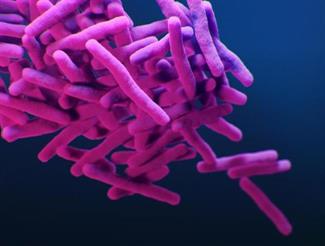.png)
Tuberculosis Control Program

Tuberculosis (TB) is a disease caused by a bacteria called Mycobacterium tuberculosis. The bacteria are spread through the air when a person with pulmonary (lung) TB disease coughs, sneezes, talks, or sings. When this occurs, a person nearby may breathe in the bacteria and become infected with TB.
Untreated TB infection can progress to active TB disease. TB disease is serious and can be fatal if not treated properly.
Fortunately, TB disease is preventable and curable with medication.
For Providers:
Solano County Tuberculosis Report, Transfer and Discharge Plan (GOTCH Form)
Public Health local contact number: 707-784-8001
General Information
What is tuberculosis (TB)?
TB is a treatable bacterial disease that is spread from person to person through the air. TB usually affects the lungs, but can affect other parts of the body as well, including the brain, kidneys or spine. TB germs are put into the air when a person with TB disease of the lungs coughs, sneezes, talks or sings.
What are the symptoms of TB?
Pulmonary (lung) TB:
- Cough
- Chest Pain
- Coughing up blood (Hemoptysis)
General TB disease:
- Feeling sick or weak
- Weight loss
- Fever
- Chills
- Night Sweats
How can you tell if someone has TB?
The tuberculin skin test (TST) is used to find out whether or not a person is infected with TB germs. For the test, a small amount of tuberculin solution is injected under the skin on the forearm. Two or three days later, a health care worker checks for a reaction on the arm.
An IGRA (Interferon-Gamma Release Assay) is a blood test used to find out if a person is infected with TB germs. For the test, blood is drawn from the arm and sent to a lab for testing. Results can take a couple days to a week to come back. Prior BCG vaccination will not cause a false-positive test result.
If either the TST or IGRA is positive, additional tests such as a chest x-ray, will be done to determine if the person has latent TB infection or TB disease.
What is the difference between TB infection and TB disease?
TB can take two forms: TB infection and active TB disease.
| Persons with TB Infection | Persons with Active TB Disease |
- Experiencing no symptoms and does not feel sick
- Cannot spread TB to others because the bacteria are not active
- Usually have a positive TST and a normal chest x-ray
- Most people infected by TB bacteria should be treated to prevent development of infectious TB Disease
| - May have symptoms that include: prolonged coughing, chills/fever, unexplained weight loss, chest pain, weakness, night sweats
- May spread TB to others
- Often have an abnormal chest x-ray
- Must isolate and be treated until no longer infectious
|
What does it mean to have a "positive" skin test?
After testing positive for TB, you will need to be evaluated by your doctor to determine next steps. Depending on your age, risk factors, and presence of symptoms, you may need additional tests such as a chest x-ray and/or evaluation of your sputum or phlegm from your lungs. Most people diagnosed with TB infection should be treated while the bacteria are dormant, and their immune system is strong. Although, the overall lifetime risk of developing infectious TB disease after diagnosis of TB infection is 10%. This risk is dependent on a person's age, comorbidities, exposure history, and genetic factors. It is important to discuss the risks and benefits of preventive treatment with your doctor or a TB expert.
Why should I treat a TB infection if I do not feel sick and I'm not spreading the disease?
Untreated latent tuberculosis infection (LTBI) accounts for approximately 80% of TB disease in California. It is important to treat TB infection to prevent TB disease. TB disease can be life-threatening, infectious, and costly. Treatment will stop the TB germs from multiplying and converting to active TB disease.
Treating LTBI has many benefits:
- Avoid severe disease and hospitalization
- No isolation period due to non-infectious status and minimal disruption to patient's daily life
- LTBI treatment regimen consists of fewer pills (1-2 medications) for a shorter duration of time (3-4 months)
- Compare this to treatment for TB disease with 4+ medications for 6+ months
- By treating TB infection, avoid advancing to disease and spreading infection to family and others
It is easier to treat LTBI compared to TB disease.
Additional Information on TB
Fact Sheets:
Resources:
Patient & Survivor Resources: